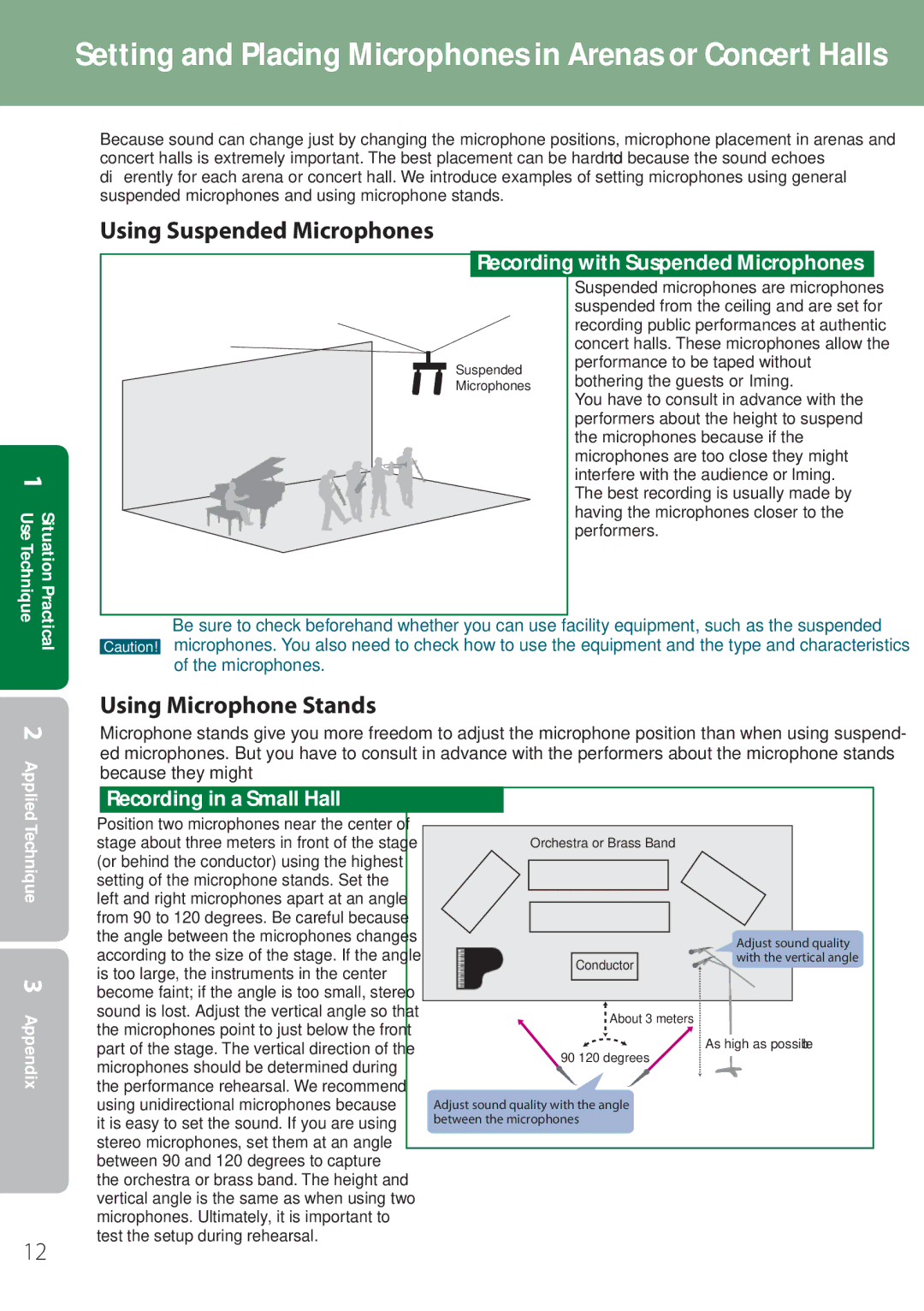
Setting and Placing Microphones in Arenas or Concert Halls
Because sound can change just by changing the microphone positions, microphone placement in arenas and concert halls is extremely important. The best placement can be hard to find because the sound echoes differently for each arena or concert hall. We introduce examples of setting microphones using general suspended microphones and using microphone stands.
Using Suspended Microphones
Recording with Suspended Microphones
Situation Practical 1 Use Technique
Suspended Microphones
Suspended microphones are microphones suspended from the ceiling and are set for recording public performances at authentic concert halls. These microphones allow the performance to be taped without bothering the guests or filming.
You have to consult in advance with the performers about the height to suspend the microphones because if the microphones are too close they might interfere with the audience or filming. The best recording is usually made by having the microphones closer to the performers.
2 Applied
Be sure to check beforehand whether you can use facility equipment, such as the suspended Caution! microphones. You also need to check how to use the equipment and the type and characteristics
of the microphones.
Using Microphone Stands
Microphone stands give you more freedom to adjust the microphone position than when using suspend- ed microphones. But you have to consult in advance with the performers about the microphone stands because they might
Recording in a Small Hall
Technique 3 Appendix
Position two microphones near the center of stage about three meters in front of the stage (or behind the conductor) using the highest setting of the microphone stands. Set the left and right microphones apart at an angle from 90 to 120 degrees. Be careful because the angle between the microphones changes according to the size of the stage. If the angle is too large, the instruments in the center become faint; if the angle is too small, stereo sound is lost. Adjust the vertical angle so that the microphones point to just below the front part of the stage. The vertical direction of the microphones should be determined during the performance rehearsal. We recommend using unidirectional microphones because it is easy to set the sound. If you are using stereo microphones, set them at an angle between 90 and 120 degrees to capture
the orchestra or brass band. The height and vertical angle is the same as when using two microphones. Ultimately, it is important to test the setup during rehearsal.
Orchestra or Brass Band |
|
| Adjust sound quality |
Conductor | with the vertical angle |
|
![]() About 3 meters
About 3 meters
As high as possible
Adjust sound quality with the angle between the microphones
12
